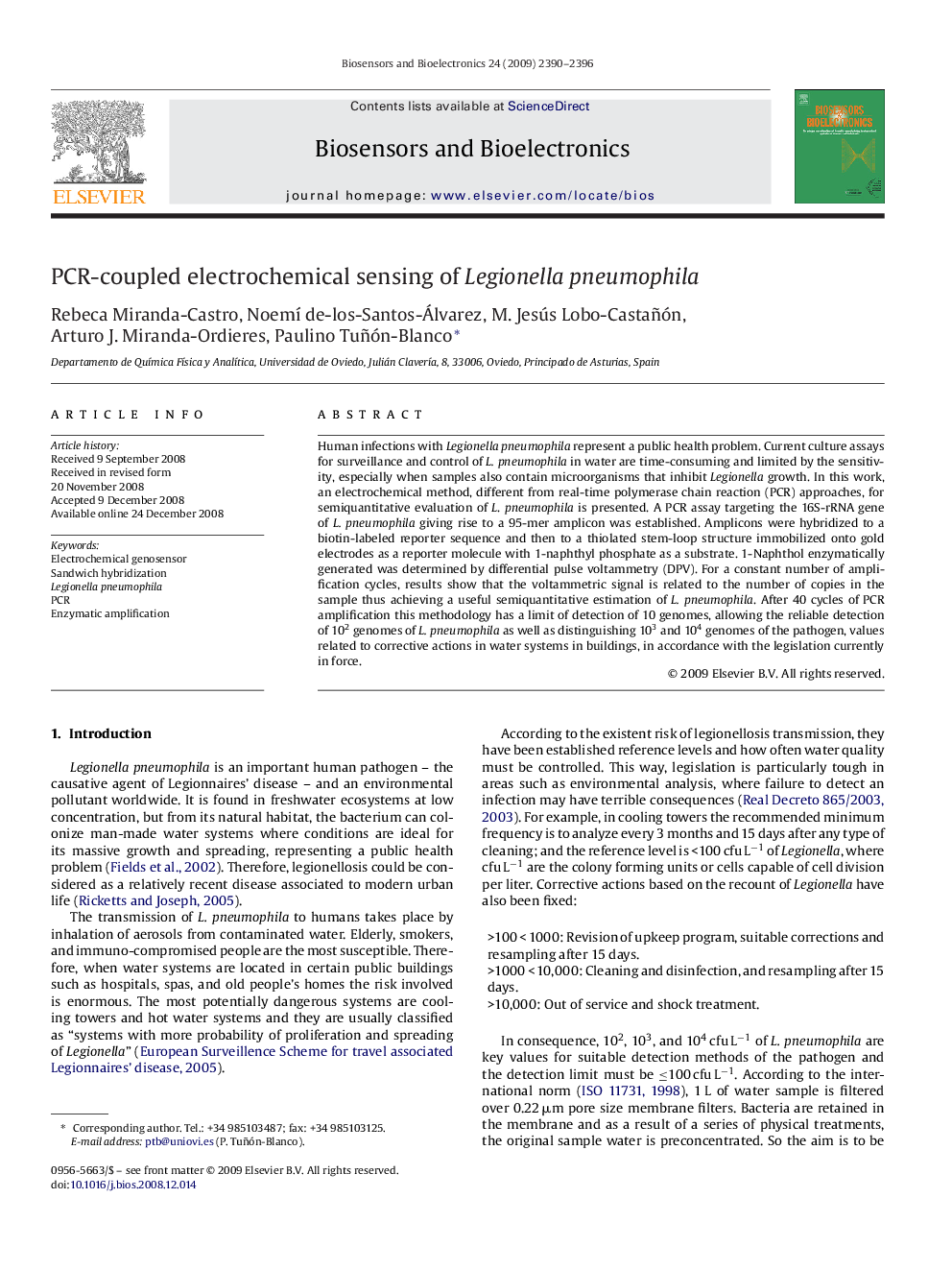| Article ID | Journal | Published Year | Pages | File Type |
|---|---|---|---|---|
| 868683 | Biosensors and Bioelectronics | 2009 | 7 Pages |
Human infections with Legionella pneumophila represent a public health problem. Current culture assays for surveillance and control of L. pneumophila in water are time-consuming and limited by the sensitivity, especially when samples also contain microorganisms that inhibit Legionella growth. In this work, an electrochemical method, different from real-time polymerase chain reaction (PCR) approaches, for semiquantitative evaluation of L. pneumophila is presented. A PCR assay targeting the 16S-rRNA gene of L. pneumophila giving rise to a 95-mer amplicon was established. Amplicons were hybridized to a biotin-labeled reporter sequence and then to a thiolated stem-loop structure immobilized onto gold electrodes as a reporter molecule with 1-naphthyl phosphate as a substrate. 1-Naphthol enzymatically generated was determined by differential pulse voltammetry (DPV). For a constant number of amplification cycles, results show that the voltammetric signal is related to the number of copies in the sample thus achieving a useful semiquantitative estimation of L. pneumophila. After 40 cycles of PCR amplification this methodology has a limit of detection of 10 genomes, allowing the reliable detection of 102 genomes of L. pneumophila as well as distinguishing 103 and 104 genomes of the pathogen, values related to corrective actions in water systems in buildings, in accordance with the legislation currently in force.
